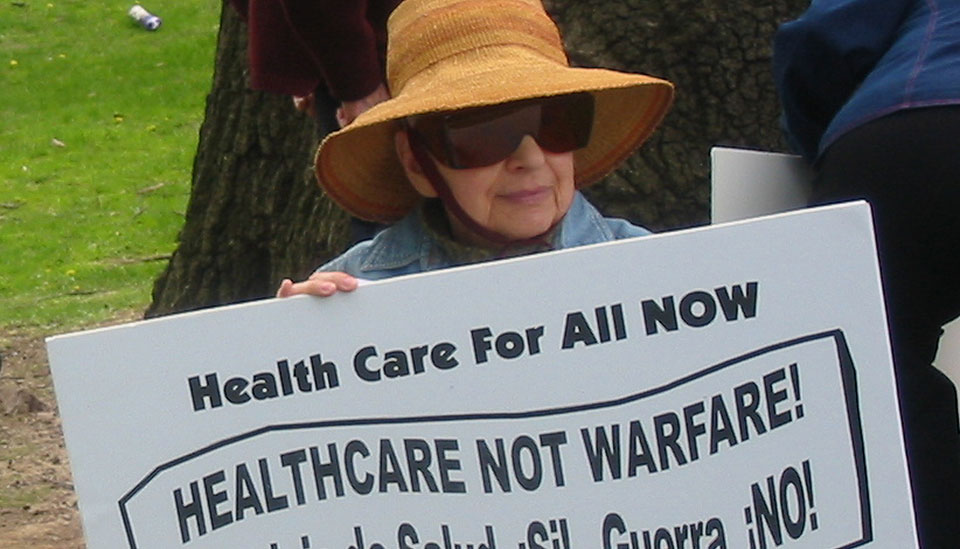
This year marks the 20th anniversary of the Rosie the Riveter/WWII Home Front National Historical Park and the 75th Anniversary of the end of WWII’s fight against fascism. The Historical Park, located in Richmond, California, features recollections of thousands of women who worked in the shipyards and factories during the war. The following article is part of the collection. It is written by Edie Fishman, who joined the Young Communist League in Philadelphia at age 14. During WWII she lived in Camden, New Jersey, and worked at the shipyard. Today she lives in New Haven, Connecticut, and continues her activism for peace, equality, justice, and socialism.
New York Shipyard, 1942-1944
I went to work in the New York Shipyard and Radio Corporation of America (RCA) located in Camden, New Jersey to be a hands-on part of the effort against Hitler, Nazism, fascism and the Aryan race theory during World War II.
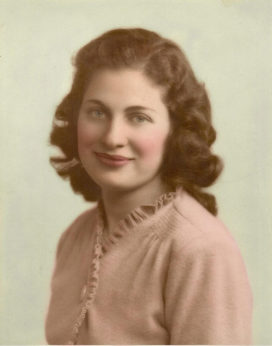
I applied for work three times at the New York Shipbuilding Corporation. The first and second time I was interviewed I was not hired. Knowing they needed workers badly during World War II and women were beginning to replace men, it seemed strange that I wasn’t hired. I suspected that there was some kind of discrimination.
I decided to apply a third time, I did and was hired on the spot. What had changed was that I said I was Catholic instead of Jewish. Note, the war we were fighting was against the “Aryan race theory.” Here it was at my own doorstep.
At New York Ship my title was Machinist Helper. I worked in the shipyard from 1942 -1944. When I was hired over 30,000 people worked there. Workers came from New York and other areas to help in the war effort. I was one of the first women to work in the yard.
There were three shifts, the day shift, the swing shift, and the graveyard shift. Shifts were changed weekly. Before we started work we punched in our time cards under the big clock on the wall. I worked on the ships from its skeleton form to the finished product. To get to the higher decks or to get to the bottom we went up and down ladders. We were very careful since we carried tools, also there was open space around the ladders.
In the winter it was bitter cold. I wore warm underwear and warm gloves. I wore goggles to keep flying objects from getting in my eyes, and wore heavy work shoes and helmets to protect my head from possible falling objects. Fires were built in tremendous barrels to help keep us warm. The first battleship I worked on was named South Dakota.
I became a member of the International Union of Marine and Shipbuilding Workers of America, Local 1, (IUMSWA). Safety on the job was very important. There were times that workers saw areas that were not safe. We reported them to the shop steward who brought the problem up to the company. There were times when the company disregarded our call for safer working conditions. I saw a horrible accident.
On a certain job, a dangerous white powder chemical was used. The chemical was kept in a large barrel inside our locker room. Workers who used this on their job scooped out the chemical and put it in a bucket. They then took it to their area of work. At the end of their shift, they brought the bucket back and emptied whatever powder there was left into the barrel.
The company was told many times to take the chemical out of the locker room and to put a safety net or rail around it with warning signs. It was never taken care of until this accident. I was in the locker room by my locker, just a few feet away from the barrel with the chemical. A worker came in to empty his bucket into the barrel and the bucket knocked against it. The powder spilled on his clothes and he went up in flames. He let out shrill screams and he threw himself on the ground and rolled over and over until he passed out. He had burns on 100% of his body. Now, after this accident, the company took the barrel out of the locker room.
Famed folk singer Woody Guthrie was asked if he would sing his songs to the workers at the New York Shipyard. He agreed to do this outside the yard near the entrance when the people changed shifts. He came to town the night before, parked near the entrance of the yard and slept in his old car. He wanted to be sure he didn’t oversleep. I was asked to come to work early to wake him. Of course, I agreed. When I arrived in the early morning I knocked on his car window and motioned for him to come out. He quickly got out and jumped onto the roof of the car bringing his guitar with him. Woody started to sing songs against the Axis powers, of winning, freedom, hope, and solidarity. There were thousands of workers crowded around the car and they went “wild.” They cheered and sang along. He got a tremendous ovation and raised their spirits high.
During WW II the Daily Worker covered news about the war abroad and the war effort here at home. The paper had many articles about the labor movement and community war efforts around the country. I read the Daily Worker with great interest and gave it out to the people who worked in the yard. The workers looked forward to getting the paper.
I would buy a small bouquet of flowers for myself at one of the stalls near the yard. I would take the flowers home to put in my room to remind me that life is really beautiful and well worth the struggle. I looked to the future.
Radio Corporation of America, 1944-46
When I left the New York Shipyard I went directly to the Radio Corporation of America (RCA), whose plant was also in Camden, New Jersey. RCA like all other manufacturers had shifted from domestic to wartime production and I wanted to continue working to help defeat Nazism and fascism. I worked in a large room with many women workers. The few men who worked there were either too old for the service or had a physical disability. I was hired as a solderer. Every piece of material that we worked on was classified as confidential. We were not told anything about the work we were doing or its eventual use.
A blood drive was started in the plant. The blood was to go to the servicemen’s hospital. I was the first worker to donate a pint of blood. I was very proud of that. I joined the United Electrical and Machine Workers of America – CIO, Local 3.
The RCA building was near the Campbell Soup Company plant which was also located near the waterfront. The workers in the Campbell Soup Company had a union building which was the Food and Tobacco Workers Union – Local 80. It had a large hall for meetings and gatherings. A few women from RCA and myself included asked permission from Local 80 to use the hall once a week on a weekend to make it a place where servicemen could come to relax, have something to eat, talk and dance. They readily agreed and they were very supportive. Many young women were needed for this project. We wrote an article for the local newspaper inviting young women who were interested to a meeting. So many came that they were lined up around the block.
I had an enlarged picture of Dorie Miller and put it on the wall. Dorie was not only the first African American to be killed in World War II but he was also the first American killed. Racism was still going strong during that time period. Because of Dorie Miller’s picture on the wall, among other pictures, a few women refused to be a part of the effort. They were concerned that servicemen of color would be encouraged to come to the center. I refused to take Dorie’s picture down and so the women left and never returned. The weekly gatherings turned out to be very successful.
I worked at RCA until the end of the war. When the news came out that the war was over I was in my rented room. People began to flood the streets with excitement, they were shouting, singing and marching all over town. I put my radio on as loud as it would go and I could not hear a sound from it because of all the joy and exuberance from the streets.
I went to work the next day and a mob of people was outside the building in which I worked. Someone from the administration finally showed up. He shouted, “You are all laid off. We won’t be needing you anymore. Jobs will be going to the boys who come back from the war.” He then called out names one by one and handed us our last check. What was very offensive to everyone was that there were no thanks for a job well done or any kind of appreciation shown. What made up for the disregard of the women and disabled men was that my husband George was coming home from the service.



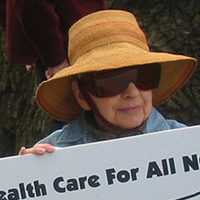
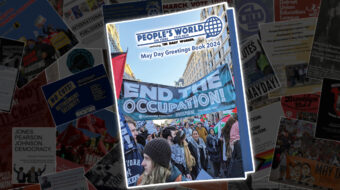
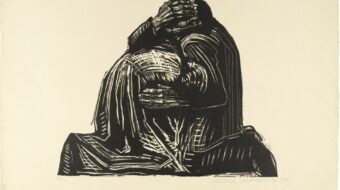
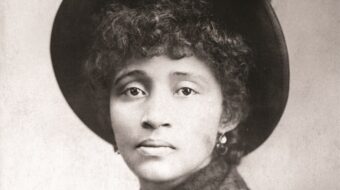





Comments